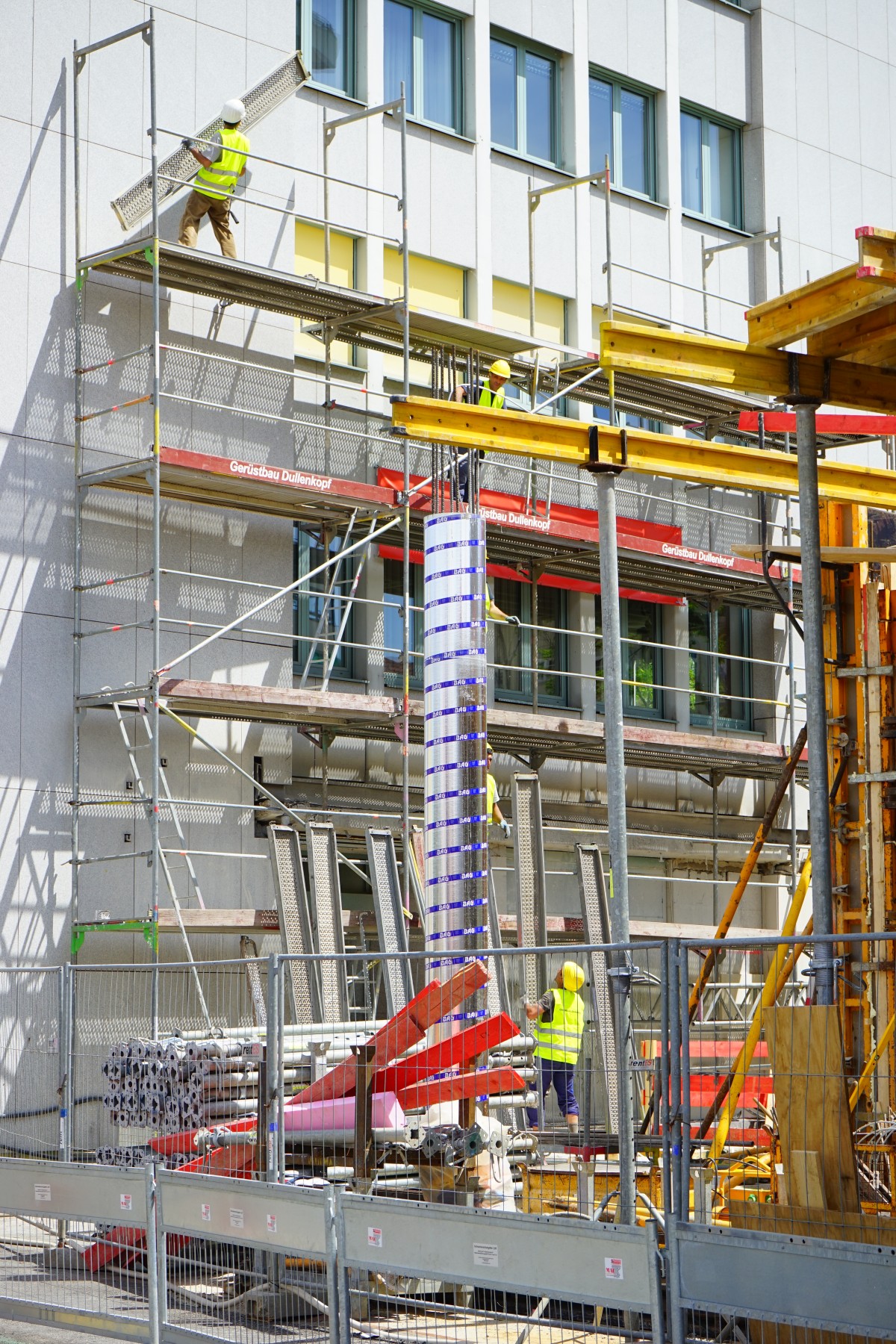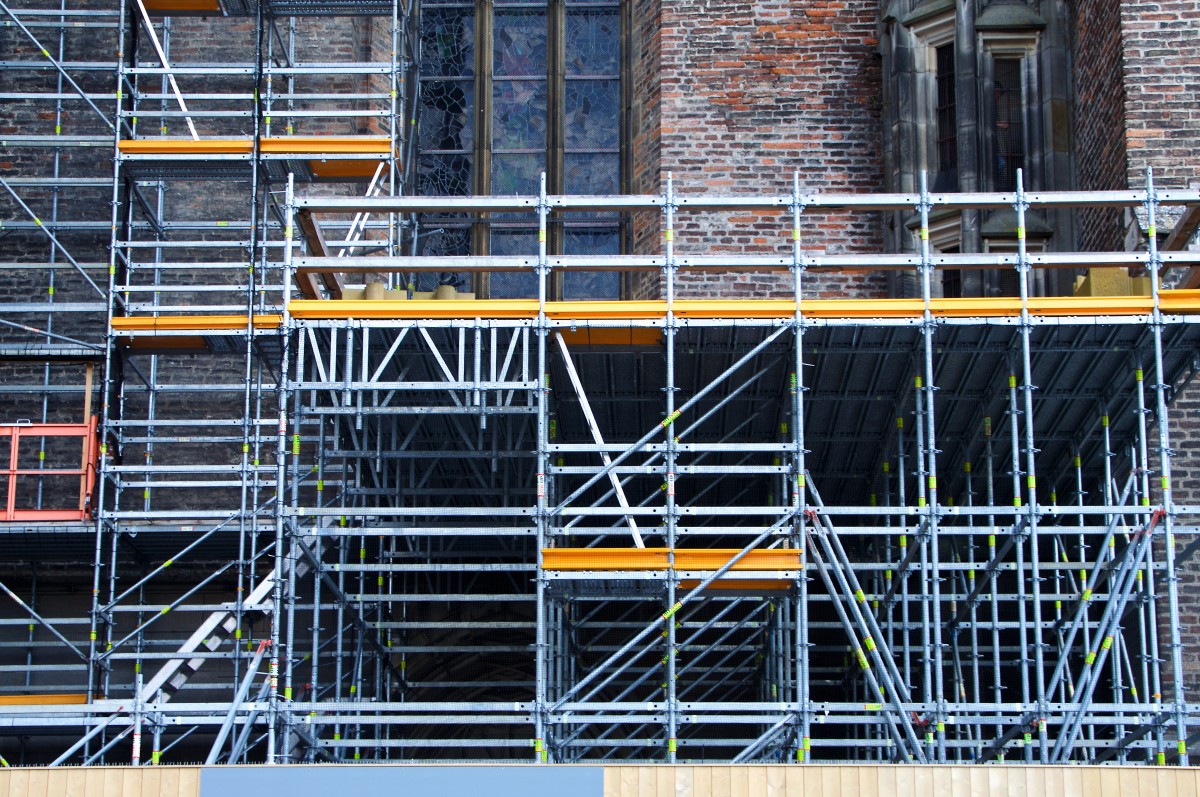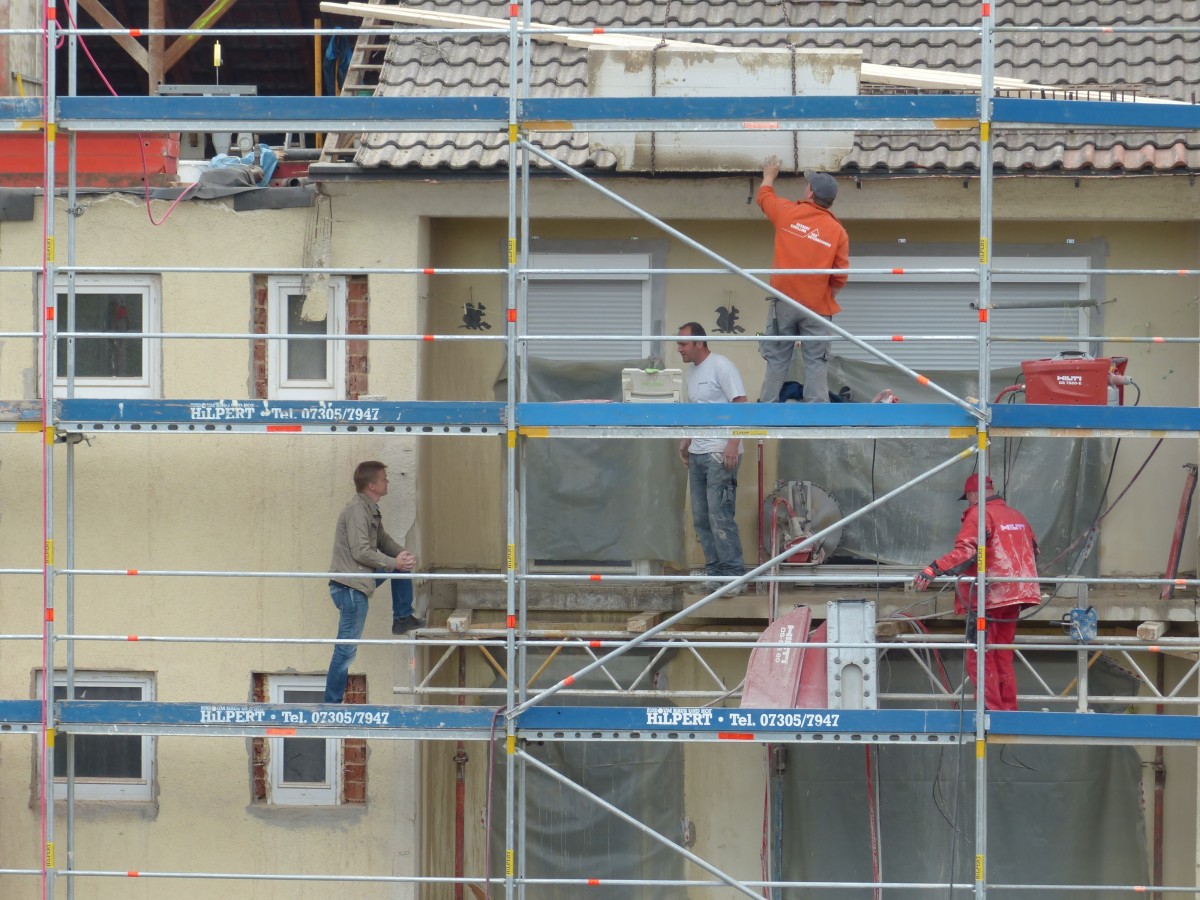How to Choose a Rolling Scaffold
A scaffold is a piece of prevalent earthmoving equipment on construction sites. It is a temporary structure designed for work at height and is more advantageous than an aerial platform. Mobile, manageable and easily transportable, rolling scaffolds can be easily assembled and disassembled. Thanks to its stabilizers and four wheels blocked during use, this structure ensures optimal safety. The rolling platform is reliable, robust, and versatile, practical both indoors and outdoors. It complies with technical standards and strict regulations to avoid any falls. The rolling scaffold is generally composed of a means of access, working floors, guardrails and stabilizers.
Scaffolding: the different types

– Fixed scaffolding
Fixed scaffolding is the most classic version of scaffolding. It is fixed to the facade, rests on the ground or can be built in corbelling on consoles. For example, it can be found on the facades of buildings under construction or repair.
– The rolling scaffold
As its name indicates, the rolling scaffold has the possibility of being moved more easily thanks to its system on wheels. It can be used for short or long term construction sites, requiring the scaffolding to be moved regularly. For example, they are used to carry out finishing and maintenance work or during hedge trimming and pruning. They usually range from 3 to 10 m.
– The staircase scaffold
A staircase scaffold is designed to fit on staircase type surfaces: working on a facade adjacent to stairs can be very practical.
– Suspended scaffolding
Suspended scaffolding, also called flying scaffolding, is intended for more specific sites where more traditional scaffolding (fixed or mobile) cannot be installed. It consists of a platform suspended by metal cables fixed in the upper part of the structure.
– The folding scaffold
The folding scaffold is more adapted to indoor works. Its folding mode allows it to pass between the doors; it can be deployed again once inside a room or a building site to reach work on the top of the walls or ceiling.
How to choose your rolling scaffold?
 You must first rigorously analyze your needs and budget to know if you should purchase it (new or used) or rent it. Each material has its advantages and disadvantages: steel is more robust, aluminium is lighter, fibreglass is both aesthetic and insulating, etc.
You must first rigorously analyze your needs and budget to know if you should purchase it (new or used) or rent it. Each material has its advantages and disadvantages: steel is more robust, aluminium is lighter, fibreglass is both aesthetic and insulating, etc.
To choose the right one, here are some essential criteria to check:
– The working height (for lesser heights, you can also opt for an articulated basket)
– The load capacity
– The size of the platform and the number of people who will work on it
– The environment of use (bearing capacity on the ground, exposure to the wind)
– The nature of the scaffolding
What is the working height of a scaffold?

The working height is the height of the floor. It is necessary to add 2 meters to it, which corresponds to the average height of a man with his arm raised. It is essential to estimate the maximum working height to cover all your site’s needs.
The advantages of a rolling scaffold
Renting a rolling scaffold has several advantages. First of all, this equipment is easily and quickly installed. In addition, the scaffolding can be easily moved, transportable and not very bulky (even very light for those made of aluminium). However, the person must be trained for the assembly and disassembly of the structure.
This equipment is also capable of carrying one or more people simultaneously. The rolling scaffold can support more or less heavy loads (up to 300 kg) while remaining stable.
What work can be done with a rolling scaffold?
– To do a restoration
– Putting up a tarpaulin on the site
– House demolition
– Remove tree stumps
– Demolition work
– Green spaces: also find bucket trucks for cars or trucks for trucks
– Leveling a ground
– Backfilling a site
Hope this post helps you choose a rolling scaffold for your business. Remember to share your comments below.